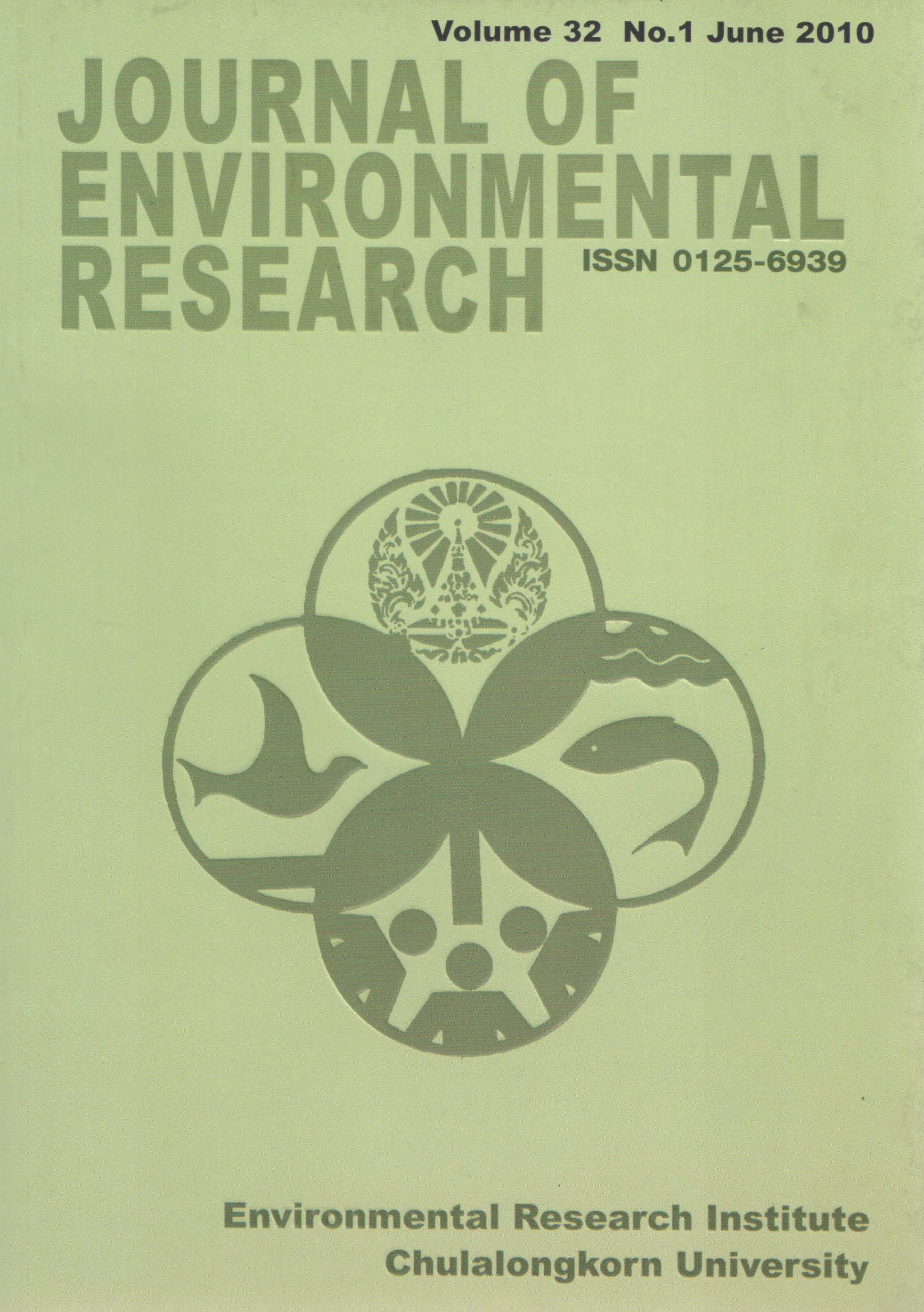Suppression of Pyrite Oxidation with Iron-phosphate Coating: Technique for Prevention of Acid Mine Drainage
Main Article Content
Abstract
This study was aimed to evaluate the feasibility of an iron-phosphate coating on pyrite surfaces for inhibiting an oxidation that is expected to prevent acid mine drainage (AMD). Prior to the experiments, pyrite samples (av. 425-850 μm in size) were mixed with sand (av. 1-2 mm in size) with a ratio of 1:4. Coating process was conducted in batch experiments that were treating with various concentrations of coating solutions, i.e., hydrogen peroxide (H2O2), sodium acetate (NaAc) and potassium dihydrogen phosphate (KH2PO4) at different contact times. Subsequently, leaching test was performed in columns (10 mm in diameter) using 0.145 M of the oxidizing solution (H2O2) at different times. Remaining phosphate, releasing iron and pH were recorded to estimate the degree of pyrite oxidation. Treating with the coating solution, a mixture of 0.3 M KH2PO4 + 0.2 M H2O2 + 0.2 M NaAc, with 20 min contact time appeared to be the optimum condition to create iron-phosphate formation on pyrite surfaces. Phosphate remains in the solution is the lowest concentration after coating process (0.497-0.745 mg L-1). The treated pyrite yielded leaching solution with pH ranging from 6.45 to 7.23 and low iron concentration releasing (0.008-0.151 mg L-1). In addition, phosphate coated on the pyrite surface was quantitatively analyzed using Electron Probe Micro Analyzer (EPMA); consequently, the highest amount was also detected from the samples treated by such solution.
Keywords : acid mine drainage, pyrite oxidation, iron-phosphate coating
Article Details

This work is licensed under a Creative Commons Attribution-NonCommercial 4.0 International License.
Published articles are under the copyright of the Applied Environmental Research effective when the article is accepted for publication thus granting Applied Environmental Research all rights for the work so that both parties may be protected from the consequences of unauthorized use. Partially or totally publication of an article elsewhere is possible only after the consent from the editors.

